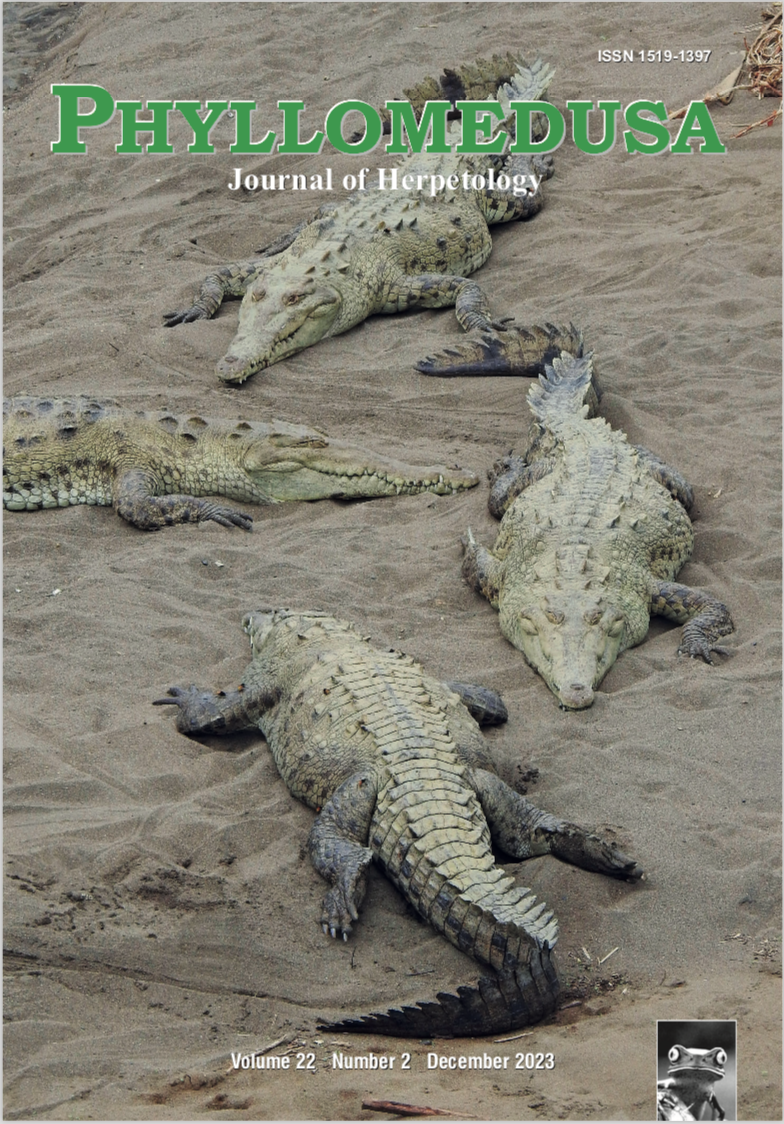An index to assess the level of vulnerability to crocodiles in coastal communities
DOI:
https://doi.org/10.11606/issn.2316-9079.v22i2p99-119Keywords:
American Crocodile, Biological parameter, Crocodylus acutus, Institutional parameter, Social parameter, Spatial parameter, WildlifeAbstract
Human-wildlife negative interactions are a recurring phenomenon worldwide, originating from the shared habitats and resources between both. In several coastal communities, negative interactions occur due to the presence of the American Crocodile (Crocodylus acutus). We have developed an index to assess the level of vulnerability of communities to this reptile. The construction of this index is based on the Approximate SustainabilityIndex developed by Gutiérrez-Espeleta in 1994. The Index of Vulnerability (IVU) is built upon several indicators across four parameters: social, biological-environmental, institutional, and spatial. These indicators are assessed using a performance scale and interpretation. The IVU assigns values to the vulnerability condition, which are presented in a color scale corresponding to defined intervals. For each indicator, reference categories and rating scales are represented with traffic light colors and numerical ratings. The IVU value obtained for a community can be visualized with a map and a corresponding figure, including a table of values for the assessed parameters.
Downloads
Downloads
Published
Issue
Section
License
Copyright (c) 2023 ESALQ-USP

This work is licensed under a Creative Commons Attribution-NonCommercial-NoDerivatives 4.0 International License.
All material originally published in Phyllomedusa belongs to Escola Superior de Agricultura Luiz de Queiroz - Universidade de São Paulo. All contents are under a license of Creative Commons BY-NC-ND.


 Impact Factor (JCR): 0.600
Impact Factor (JCR): 0.600 CiteScore: 1.0
CiteScore: 1.0